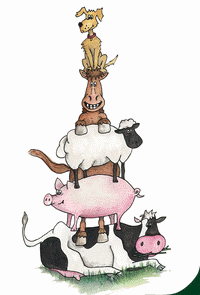Mild winter may increase small redworm risks warns Zoetis
Worming experts at Zoetis are warning that this spring, the risk of larval cyathostominosis in horses may be higher than usual, following the UK’s exceptionally mild, wet winter.
The potentially fatal syndrome is caused by the mass emergence of small redworm from their dormant, encysted state. Encysted small redworm are one of the most harmful parasites to affect horses in the UK. They are larval stages of the small redworm that hibernate in the lining of the gut and usually ‘wake up’ in the early spring. Their mass emergence can lead to larval cyathostominosis, causing diarrhoea and colic with up to a 50% death rate.
“It is recommended that all horses receive a treatment for ESRW during the late autumn/winter, regardless of their faecal worm egg count,” said Wendy Talbot, Zoetis veterinary surgeon. “In some circumstances, such as if the preceding winter has been especially mild, then it is advisable to consider a second ESRW dose in the spring for those horses most at risk.”
All horses can develop larval cyathostominosis but those at particular risk are youngsters, old or immune-compromised horses, those with an unknown or sub-optimal worming history and those that were not dosed correctly in late autumn/early winter.


